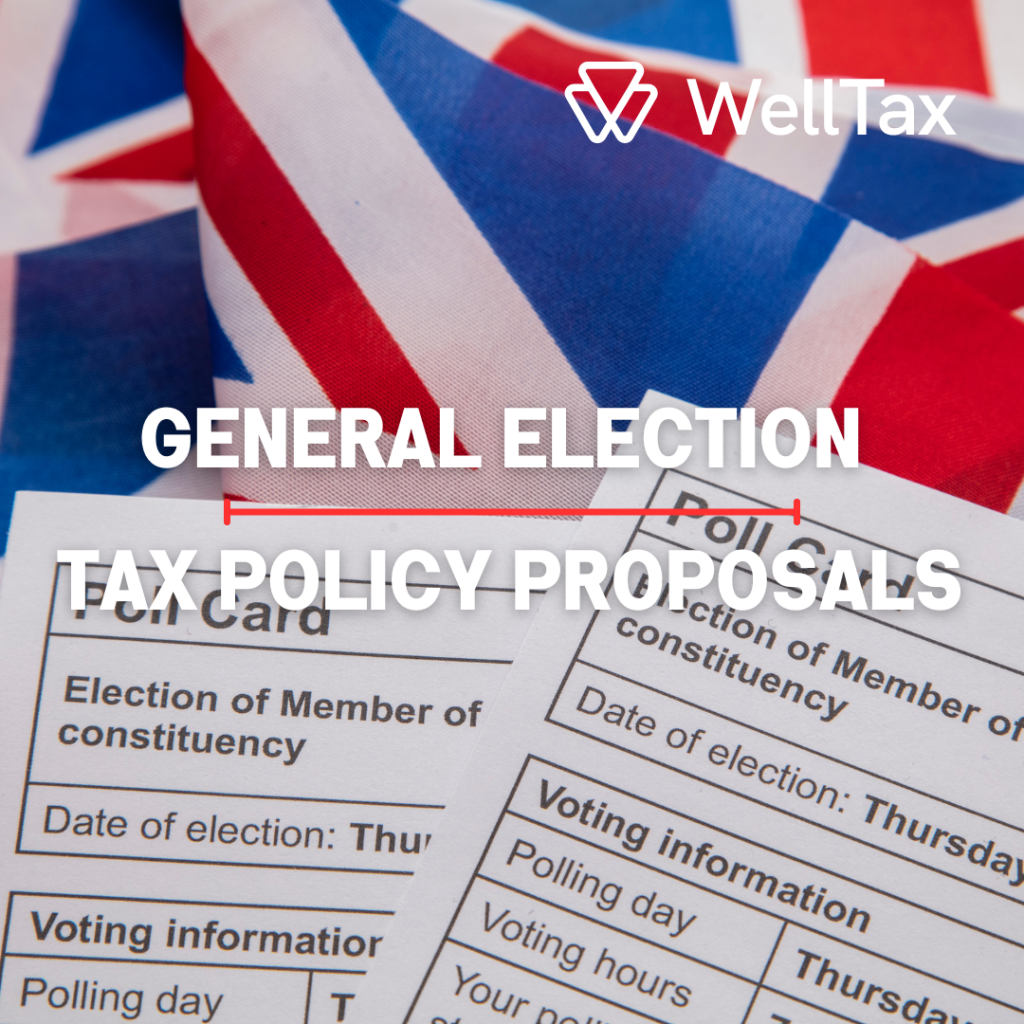As the UK approaches its General Election on July 4, 2024, the tax policies proposed by the Labour and Conservative parties are under close examination. Each party has articulated distinct strategies for corporation tax and personal tax, grounded in their differing economic ideologies.
Labour Tax Plans
Labour Party tax plans focus on increasing funding for public services and redistributing wealth to reduce income inequality. The party envision an investment of £855m into improving HMRC with the aim of generating an extra £5.2bn in tax revenues (estimated for 2028-29). Their proposal suggests raising taxes on higher earners and large corporations to generate more revenue for essential services such as healthcare, education, and infrastructure.
Key components of Labour tax plans include the following:
- Corporation Tax: Labour party will maintain the Corporation Tax rate at 25% throughout the next parliament, providing stability for businesses.
- Business Tax Reliefs: Key tax reliefs, including full expensing, the Annual Investment Allowance (AIA), and the regimes for R&D tax relief and the Patent Box, will be retained offering predictability for financial planning and capital investment decisions.
- Energy Profits Levy: Labour tax plans promise to increase the Energy Profits Levy by 3%, targeting oil and gas companies. By raising the effective tax rate for this sector to 78%, Labour aims to ensure that highly profitable industries make fair contributions to public finances.
- VAT: Labour tax plans also intend to end the VAT exemption for private schools, which would redirect additional revenue into state education.
- Income Tax: The party pledges not to raise Income Tax or National Insurance rates but will maintain the freeze on Income Tax thresholds until 2028. This approach suggests a cautious stance on tax cuts, prioritizing fiscal responsibility. For taxpayers, the continued freeze on thresholds means prolonged exposure to fiscal drag, affecting disposable income and consumption patterns.
- Non-Dom Regime: Labour party also aims to abolish the current non-dom regime and close related loopholes, ensuring offshore assets are taxed in the UK. This policy promotes equity in the tax system, potentially affecting high-net-worth individuals’ financial strategies and cross-border tax planning.
Conservative Tax Cuts
The conservative tax cuts proposal emphasizes reducing the tax burden on individuals and businesses. Lowering taxes is aimed to increase disposable income for individuals to spend, and businesses with capital to invest and create jobs. This, in turn, is expected to stimulate economic growth. The tax cut plan is anticipated to bring an additional £20bn in tax revenues over the next five years.
Key elements of the conservative tax cuts include:
- Corporation Tax: Corporation Tax rate will be maintained at 25%, this commitment to a consistent tax rate aids in long-term financial planning and capital allocation.
- VAT: Conservative tax cuts also include a pledge to freeze the VAT rate and increase the VAT registration threshold to £90,000. This policy aims to reduce the administrative and financial burden on small businesses, encouraging entrepreneurial activity and growth.
- National Insurance Contributions: Conservative tax cuts include a long-term vision to abolish National Insurance, starting by reducing the rate of Class 1 NIC from 8% to 7% from April 2025, and to 6% from April 2027; class 4 NIC paid by the self-employed (currently 6%) is set to decrease by 1 percentage point each year from April 2025, and to be entirely scraped in April 2029.
- Personal Allowance: The Conservative party is also introducing a new age-related Income Tax personal allowance, tracking the state pension yearly increase. To preserve pensioners’ purchasing power and to prevent them from being automatically compelled to pay income tax, the “triple lock plus” proposal would increase pensioners’ tax-free personal allowance annually by the same amount as the state pension.
- Child Benefits: the high-income child benefit charge (HICBC) is set to be assessed on household income, rather than individual’s income. From April 2026, HICBC will begin to claw back child benefit where household income reaches £120,000. The full amount would be tapered where household income reaches £160,000 or more.
- Stamp Duty: first-time buyers in England and Northern Ireland are set to pay Stamp Duty land tax (SDLT) on houses worth £425,000 or more (from the current threshold of £300,000).
- Capital Gain Tax: Conservative tax cuts aim to introduce a two-year temporary capital gains tax (CGT) relief for landlords who sell their property to their existing tenants.
Conclusion
The tax policies of Labour and the Conservatives reflect their distinct visions for the country’s economic future. Labour tax plans focus on stable corporate tax rates, equitable contributions from high earners and profitable sectors, and redirecting funds to public services. In contrast, conservative tax cuts aim to maintain low corporate tax rates, reduce personal tax distortions, and foster a business-friendly environment.
Both approaches have significant implications for financial planning, business investment, and economic management. Understanding these policies in depth is crucial for voters and businesses as they consider which vision aligns best with their financial goals and the broader economic landscape.
For more information on our personal and business tax advisory services, please visit our Private Clients page and our Business & Corporate Tax page
